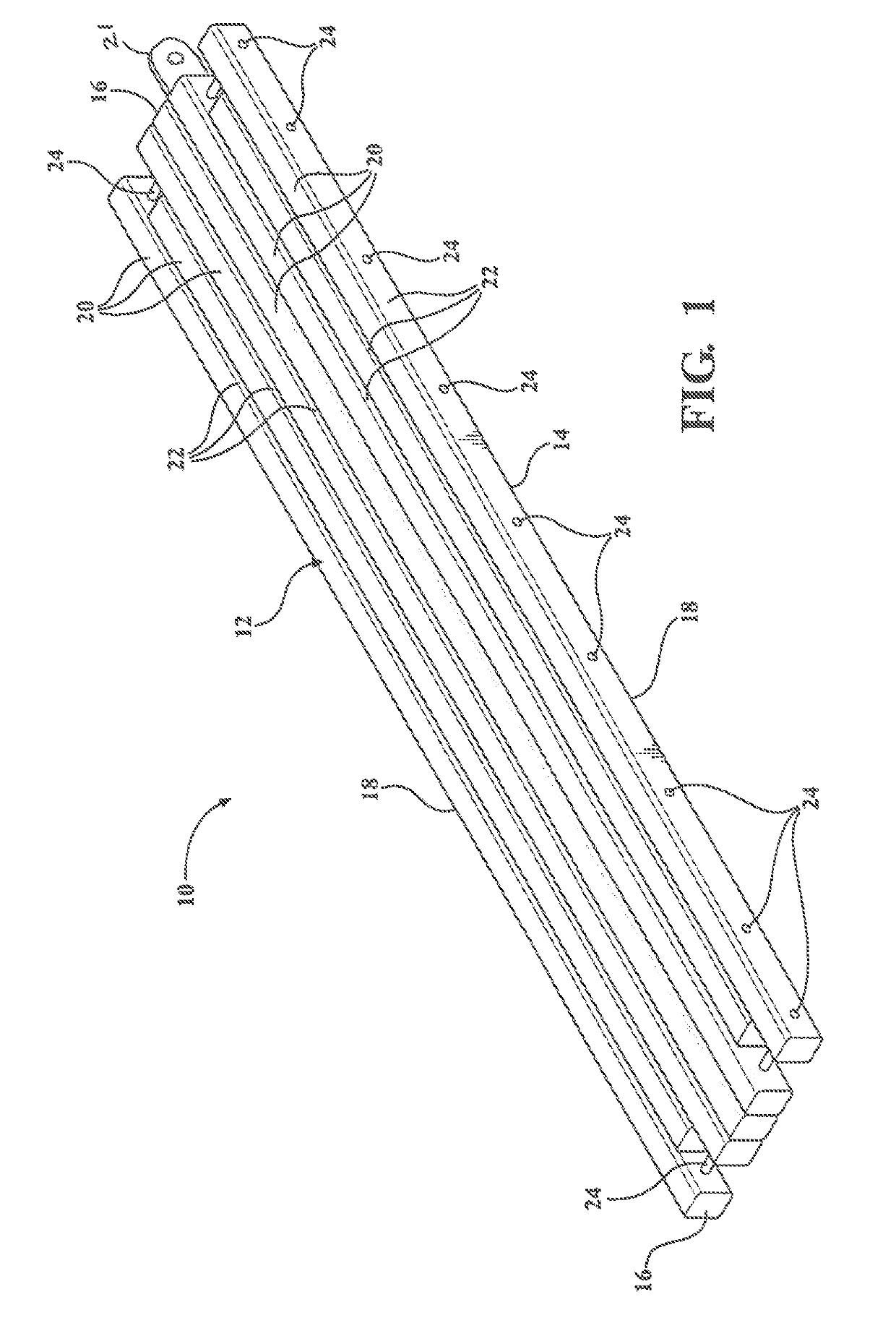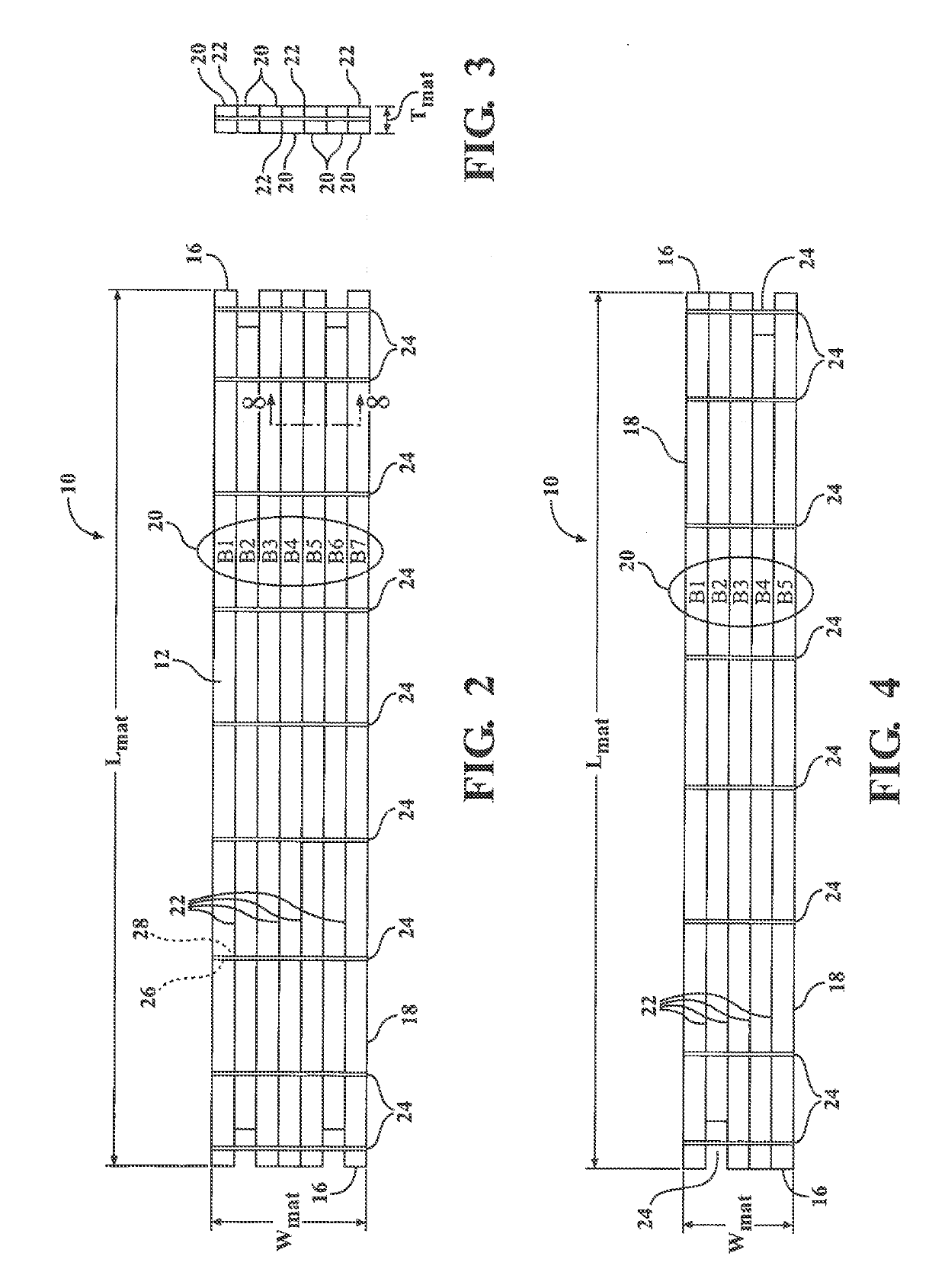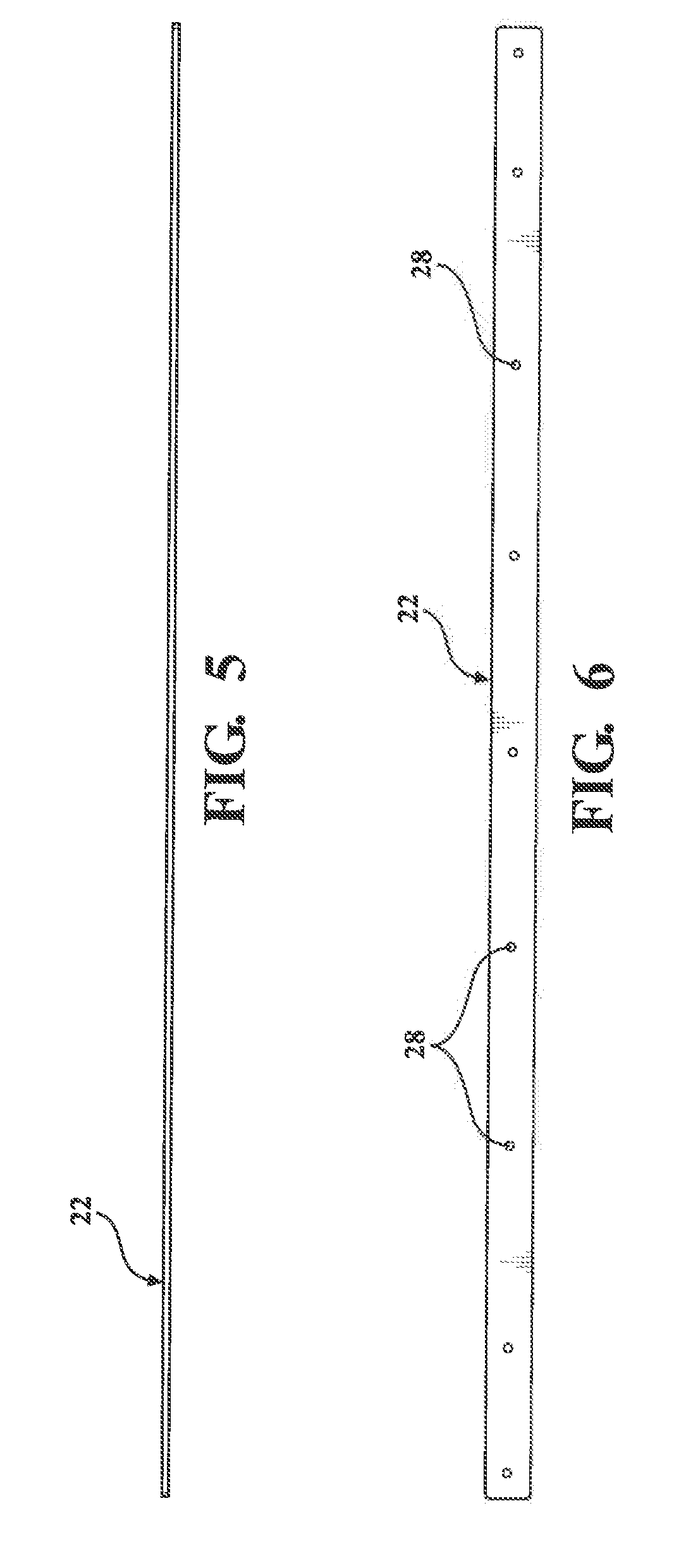Structural reinforced composite construction mat
- Summary
- Abstract
- Description
- Claims
- Application Information
AI Technical Summary
Benefits of technology
Problems solved by technology
Method used
Image
Examples
Embodiment Construction
[0029]A structural reinforced composite mat constructed according to an embodiment of the invention is generally shown in perspective view in FIG. 1 and indicated by reference numeral 10.
[0030]The mat 10 has a top surface 12, a bottom surface 14, longitudinally opposite ends 16 and laterally opposite sides 18. The mat 10 has an overall length dimension Lmat extending between the two ends 16, an overall width dimension Wmat extending between the two sides 18, and an overall thickness Tmat dimension extending between the top 12 and bottom 14 surfaces. An exemplary mat 10 may have an overall Tmat×Wmat×Lmat measurement of 9 inches×51 inches×24 feet. All of these dimensions can vary depending upon the needs of a particular application. A mat according to an alternative embodiment (FIG. 4) may have overall dimensions of 7″×46″×20′.
[0031]Throughout the figures, it will be appreciated that dimensional references are exemplary in nature, and that the arrangements illustrated in the figures m...
PUM
 Login to View More
Login to View More Abstract
Description
Claims
Application Information
 Login to View More
Login to View More - R&D
- Intellectual Property
- Life Sciences
- Materials
- Tech Scout
- Unparalleled Data Quality
- Higher Quality Content
- 60% Fewer Hallucinations
Browse by: Latest US Patents, China's latest patents, Technical Efficacy Thesaurus, Application Domain, Technology Topic, Popular Technical Reports.
© 2025 PatSnap. All rights reserved.Legal|Privacy policy|Modern Slavery Act Transparency Statement|Sitemap|About US| Contact US: help@patsnap.com



